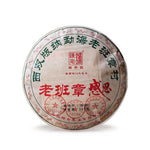What Does Matcha Taste Like
Matcha is a finely ground powder of specially grown and processed green tea leaves. The leaves are traditionally grown in Japan under shade to increase chlorophyll levels and amino acids.
When you taste matcha, you can expect a rich, vegetal flavor with a slight natural sweetness. The specific taste profile can vary depending on the quality of the leaves and how they are prepared.
Matcha also contains a unique combination of caffeine, theanine, and antioxidants. This mix contributes to a balanced energy boost and a sense of calm alertness.
Bestsellers
Quality levels of matcha can be divided into two main categories:
- Ceremonial Grade: Highest quality, typically used in traditional tea ceremonies.
- Culinary Grade: Used for cooking and baking, with a stronger taste that holds up well in recipes.
Here is a brief comparison:
| Attribute | Ceremonial Grade | Culinary Grade |
|---|---|---|
| Taste | Subtle, smooth, creamy | Bold, strong |
| Texture | Very fine and vibrant green | Slightly coarser |
| Usage | Drinking as tea | Cooking, baking |
When preparing matcha, use a bamboo whisk (chasen) to mix the powder with hot water until frothy. The technique you use will affect the texture and taste.
Sensory Profile of Matcha
Matcha offers a unique combination of visual appeal, aroma, and complex flavors, making it distinct from other teas. Each aspect contributes to its overall experience.
Visual Aspects
Matcha has a vibrant green color due to the high chlorophyll content. The powder is fine and smooth, resembling talcum powder. The green hue can range from bright green to a more subdued olive.
The color is an indicator of quality. Higher-grade matcha typically has a more vivid, bright green tone. The powder should be free from lumps, providing a smooth texture when whisked into water.
When prepared, the tea should present a rich, green foam on top. The foam's consistency and color can also reflect the matcha's quality.
Aroma Characteristics
Matcha has a fresh, grassy scent, often compared to freshly cut grass. The aroma is inviting and suggests a strong, vegetal character.
You might also detect hints of seaweed, reflecting its origin from shade-grown tea leaves. There might be subtle notes of sweetness, often described as a bit like freshly boiled vegetables or spinach.
The scent can indicate the matcha's freshness. A stale or dull aroma might suggest lower quality or aged matcha.
Flavor Components
The flavor of matcha is complex, encompassing several taste profiles. It has umami, the savory taste found in broths and meats, providing a pleasant, rich flavor.
There's a natural sweetness that balances the bitterness. The vegetal notes reflect its green tea origin, with flavors similar to spinach or edamame.
Lao Ban Zhang
The slight bitterness is well-rounded and not overpowering. This complexity makes matcha a unique and enjoyable beverage for many.
Factors Influencing Matcha Taste
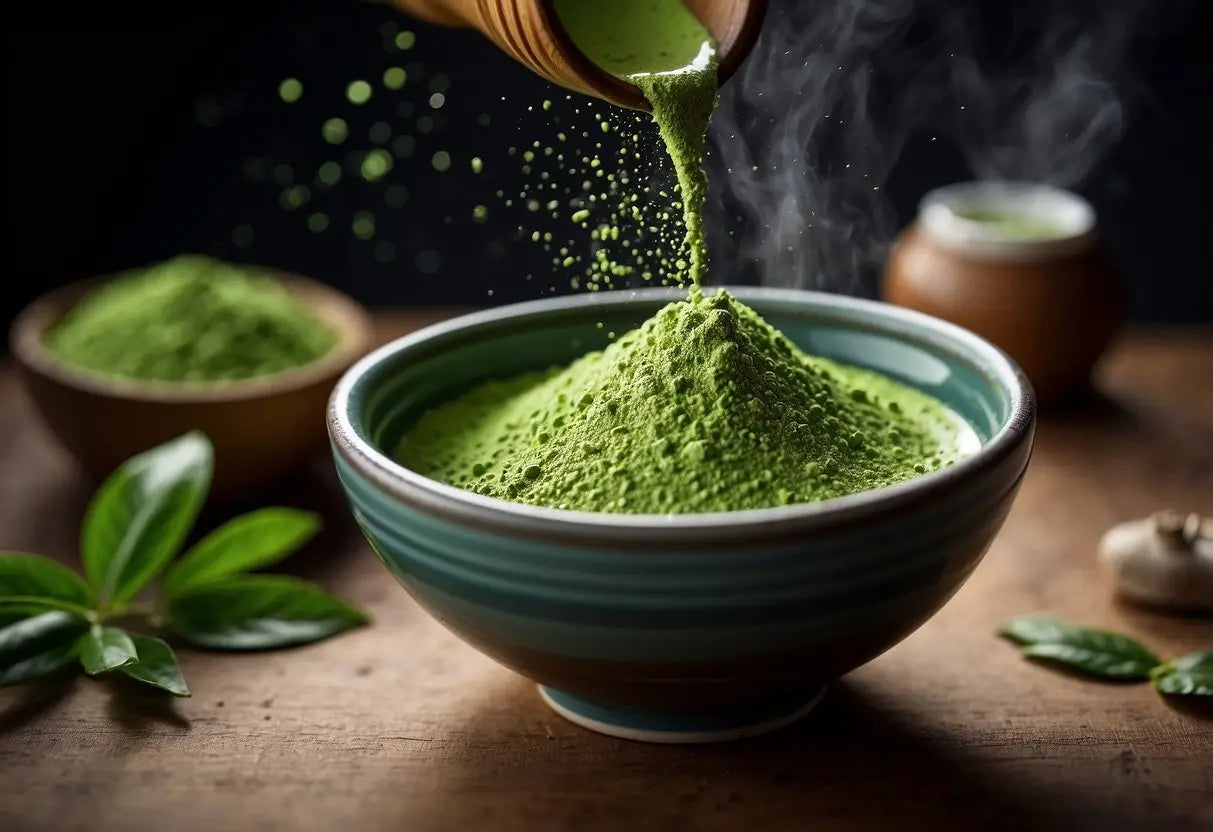
The taste of matcha is influenced by its growing conditions, processing methods, and quality grade. These factors interplay to create the distinctive flavors associated with this green tea powder.
Shade-Grown Harvesting
Matcha plants are shaded for about three weeks before harvest. This process increases chlorophyll content, which gives matcha its vibrant green color and distinct flavor.
Shading also boosts the amino acid theanine. This leads to a sweeter and more complex flavor. The shading technique differentiates high-quality matcha from regular green tea.
Care during shading impacts overall taste. Too much shade or too little can alter the flavor profile. Growers must carefully balance light exposure to maintain the desired taste.
Grinding Techniques
The grinding process directly affects matcha's texture and flavor. Matcha is traditionally ground using granite stone mills. This method ensures a fine, smooth powder that dissolves easily and preserves flavor.
Stone grinding prevents overheating, which can cause bitterness. The slow, meticulous process is crucial. Faster grinding methods might compromise the delicate flavor and aromatic qualities of matcha.
Grinding consistency is key. Uneven grinding can lead to a gritty texture and altered taste. Consistent particle size helps matcha remain smooth and reduces bitterness.
Culinary Grade vs Ceremonial Grade
Matcha is classified into culinary and ceremonial grades. These grades significantly impact taste and intended use. Ceremonial grade matcha is the highest quality, meant for drinking. It has a smooth, delicate flavor with a naturally sweet taste.
Culinary grade matcha is used for cooking and baking. It has a more robust, slightly bitter taste. This grade is still good quality but designed to complement other ingredients.
Understanding these grades helps matcha enthusiasts choose the right kind for their needs. The differences in processing and intended use shape the unique characteristics of each grade.
Comparing Matcha with Other Teas
When comparing matcha with other teas, several key differences and unique features stand out.
Matcha, unlike traditional teas, uses the whole leaf. This gives it a richer, more concentrated flavor. The taste can be described as earthy, grassy, and slightly sweet.
Key Differences
| Feature | Matcha | Green Tea | Black Tea | Herbal Tea |
|---|---|---|---|---|
| Processing | Stone-ground whole leaves | Steamed/Brewed leaves | Fermented/oxidized leaves | Various plants/herbs |
| Caffeine | Moderate to High | Moderate | High | Caffeine-free (most) |
| Flavor | Earthy, umami, sweet | Light, grassy | Bold, malty | Varies widely |
Appearance: Matcha has a vibrant green color, while green tea appears more muted. Black teas have a dark amber hue, and herbal teas vary in color depending on the ingredients.
Flavor Profile
While green tea is known for its light, refreshing taste, black tea offers a bolder, more robust flavor. Matcha’s unique preparation results in a thick, frothy beverage with an intense, complex taste. Herbal teas can range from floral to spicy, depending on the blend and ingredients.
Each tea offers distinct experiences due to the differences in processing and ingredients used. For example, the fermentation process in black tea results in its strong, rich flavor, in contrast to matcha's creamy, vegetal notes.
Understanding these differences helps you appreciate the unique qualities of each type of tea.
Culinary Uses of Matcha
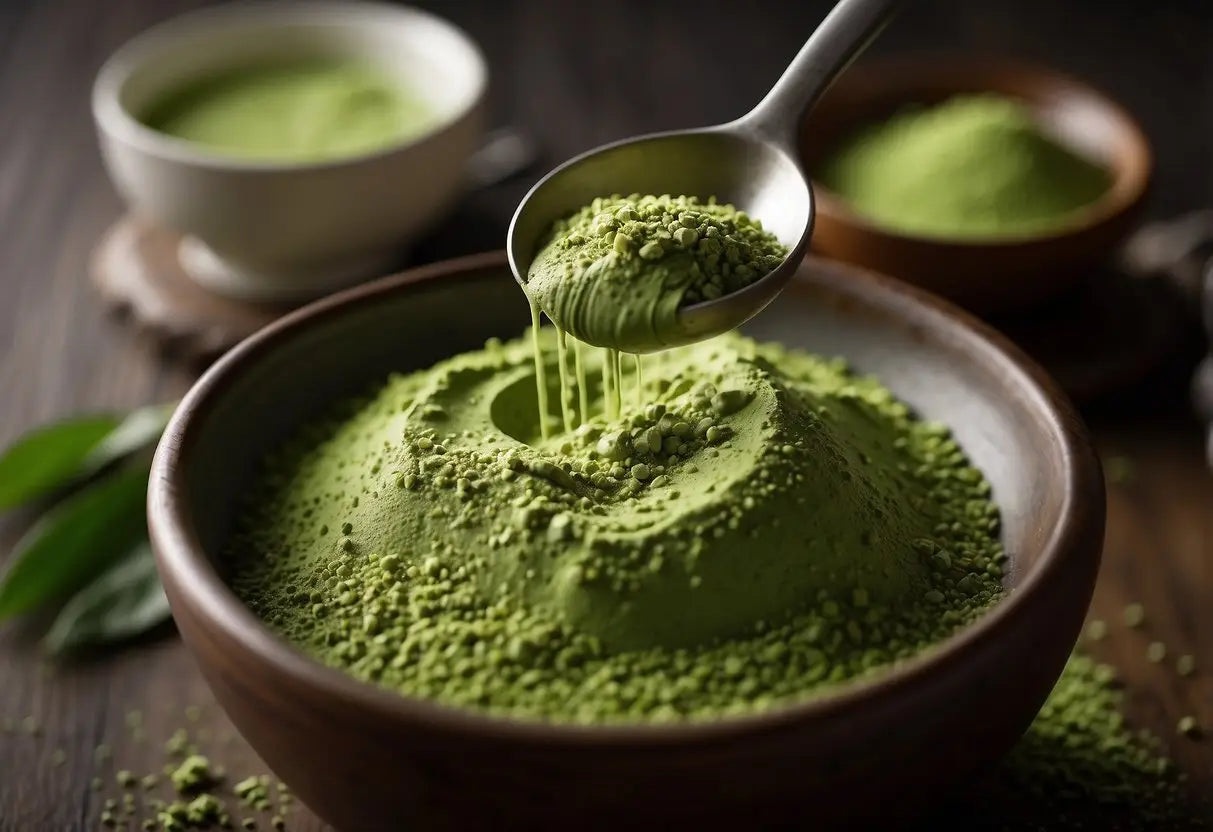
Matcha is popular in both beverages and desserts, adding a unique flavor and vibrant green color.
Matcha in Beverages
Matcha is widely used in drinks, imparting a rich, earthy taste. The traditional green tea matcha latte combines matcha with steamed milk and a sweetener. Another popular choice is the matcha smoothie, blending matcha powder with fruits, yogurt, and ice for a refreshing drink.
For special occasions, you can find matcha cocktails, which mix matcha with ingredients like gin or vodka for a unique twist. Iced matcha tea is a cooling beverage for hot days, often sweetened and served over ice. These drinks highlight the versatility of matcha in liquid form.
Matcha in Desserts
In desserts, matcha adds both flavor and color. Matcha ice cream is a favorite, with a creamy texture and a blend of sweetness and bitterness. Matcha cookies and cakes use the powder to create visually appealing, green-hued treats with a distinctive taste.
You might also come across matcha tiramisu or matcha cheesecake, which put a spin on classic desserts. Matcha mochi, a chewy rice cake dessert, showcases matcha's adaptability in traditional and modern recipes. Matcha brings a unique taste to any sweet dish.
Health Benefits Related to Taste
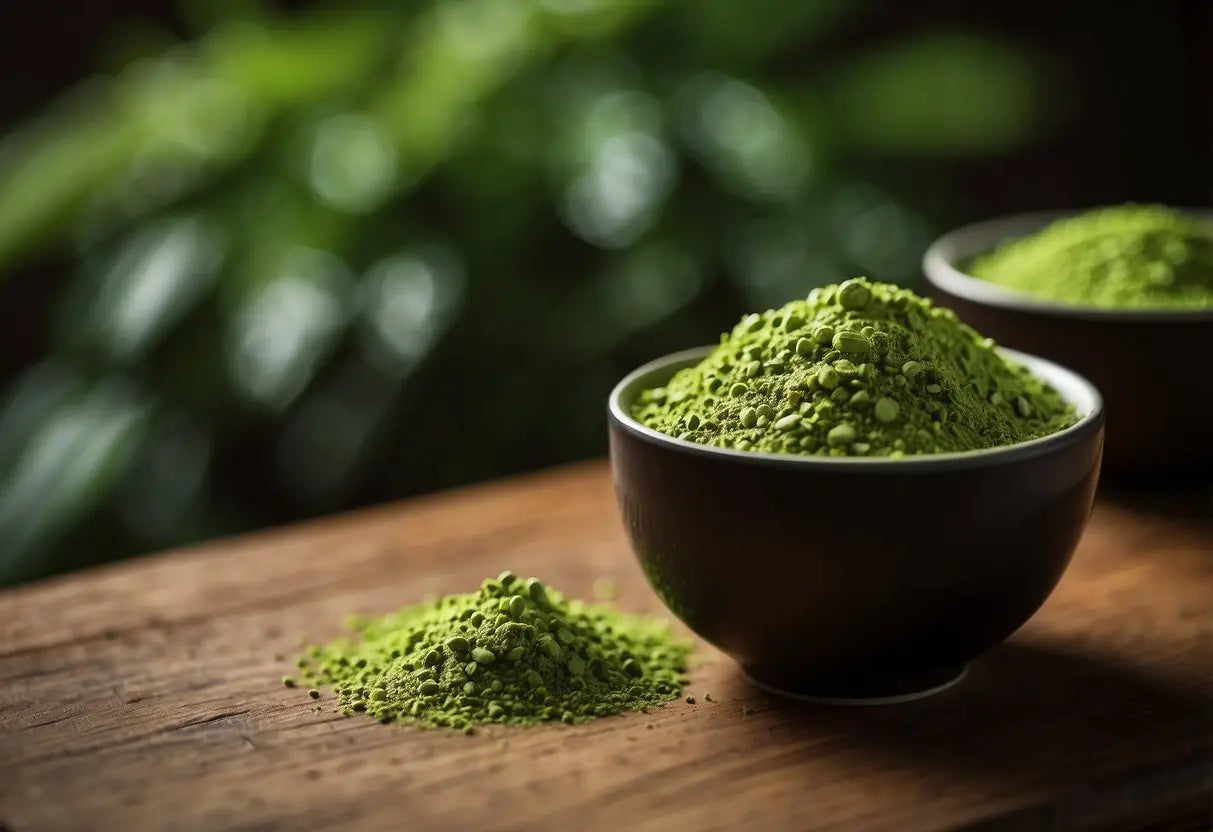
Matcha's taste is closely intertwined with its health benefits. This ancient beverage is rich in nutrients that contribute to its flavor, and your psychological perception of taste can enhance your experience of its benefits.
Interaction of Taste and Nutrients
Matcha's unique taste comes from its combination of amino acids, catechins, and chlorophyll. The savory, umami flavor is primarily due to the amino acid L-theanine, which promotes relaxation without drowsiness. Matcha's slightly bitter taste is due to the high catechin content, particularly EGCG (Epigallocatechin gallate), which has antioxidant properties that help reduce inflammation and support heart health.
These bitter and savory elements not only define matcha's flavor but also indicate its rich nutrient profile. The presence of these compounds highlights the close relationship between matcha's taste and its health-promoting properties. Consuming matcha provides a direct link between its flavor and the beneficial nutrients you ingest.
Psychological Factors of Taste
The ritual of preparing and consuming matcha can positively influence your mental well-being. The traditional Japanese tea ceremony emphasizes mindfulness and tranquility, enhancing the psychological benefits associated with matcha's taste. The soothing process of whisking matcha and the umami flavor profile can create a calming experience, which may reduce stress and improve mental focus.
Your psychological response to matcha's taste can impact how your body reacts to its health benefits. Enjoying the taste of matcha can improve mood and increase satisfaction, making it more likely for you to incorporate it regularly into your diet. This regular consumption intensifies the positive health effects you experience over time.
Preparing Matcha for Optimal Taste
To achieve the best flavor from matcha, it's crucial to consider both whisking methods and specifics of water temperature and quality. These steps ensure you get the full, nuanced experience of matcha’s taste.
Whisking Techniques
Invest in a bamboo whisk (chasen) for the best results. Begin by sifting the matcha powder to remove any clumps, which ensures a smoother mixture.
Add about 1-2 grams of matcha powder to your bowl. Pour in a small amount of hot water (just enough to cover the powder) and whisk in a zigzag motion. This zigzag pattern helps create a frothy texture, important for a balanced taste. The goal is to achieve a layer of fine bubbles on top, signaling that the matcha is properly aerated.
Water Temperature and Quality
The ideal water temperature for matcha is around 175°F (80°C). Boiling water can scorch the powder, leading to a bitter taste. Let boiled water cool for a minute or two before adding it to the matcha powder.
Water quality also matters. Use filtered water to avoid mineral and chlorine tastes that can interfere with matcha’s natural flavors. Softer water enhances the sweetness and umami elements of the matcha. The right water temperature and purity are key to appreciating its full flavor profile.
Storing Matcha to Preserve Freshness
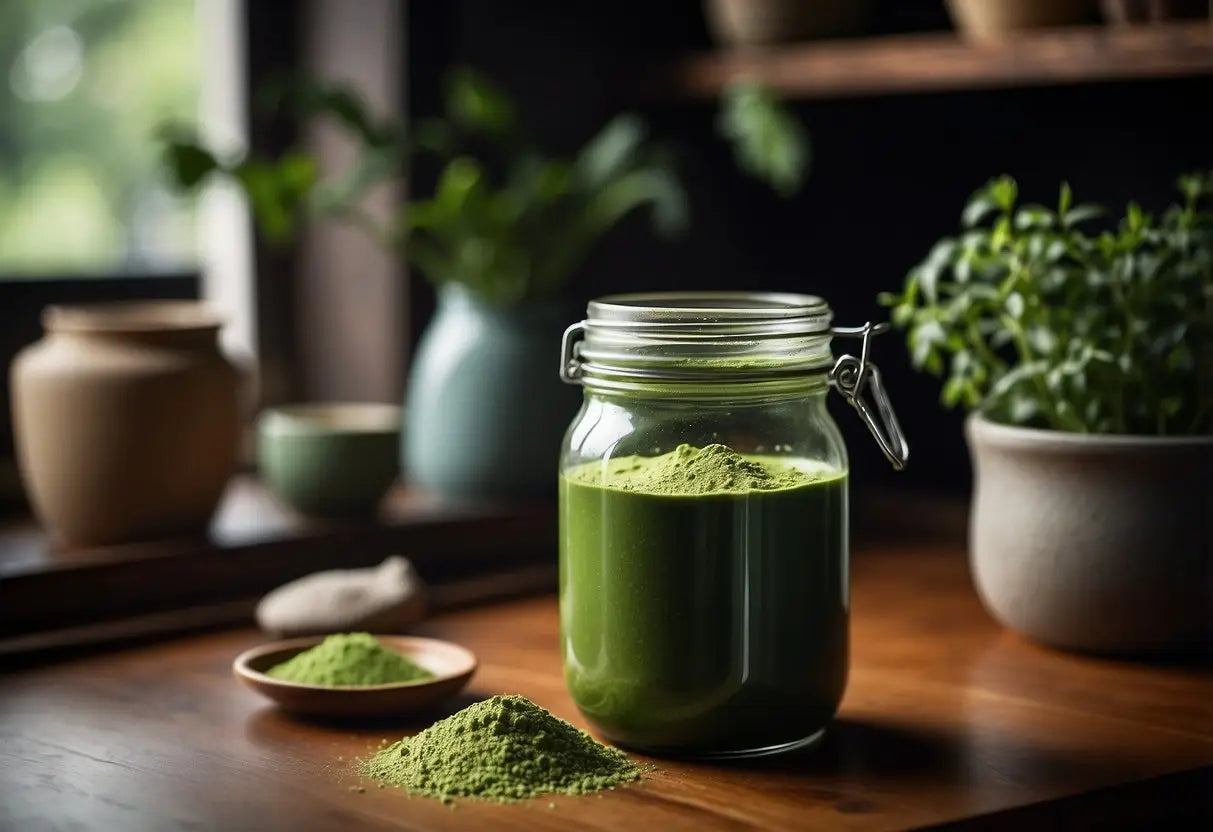
To keep your matcha fresh, always store it in an airtight container. Exposure to air can cause it to oxidize, affecting its flavor and color.
It’s important to keep matcha away from light. Store it in a dark cupboard or pantry to protect it from sunlight.
Temperature plays a crucial role. Matcha should be kept in a cool place. Refrigeration is ideal, but ensure the container is sealed tightly to avoid moisture.
Avoid storing matcha near strong odors. Matcha can easily absorb smells, which can alter its taste profile.
Best Practices for Storing Matcha:
- Use an airtight container.
- Keep away from light and heat.
- Store in a cool and dry place.
- Avoid strong odors nearby.
By following these steps, you can maintain the vibrant flavor and quality of your matcha.
Matcha Taste FAQs
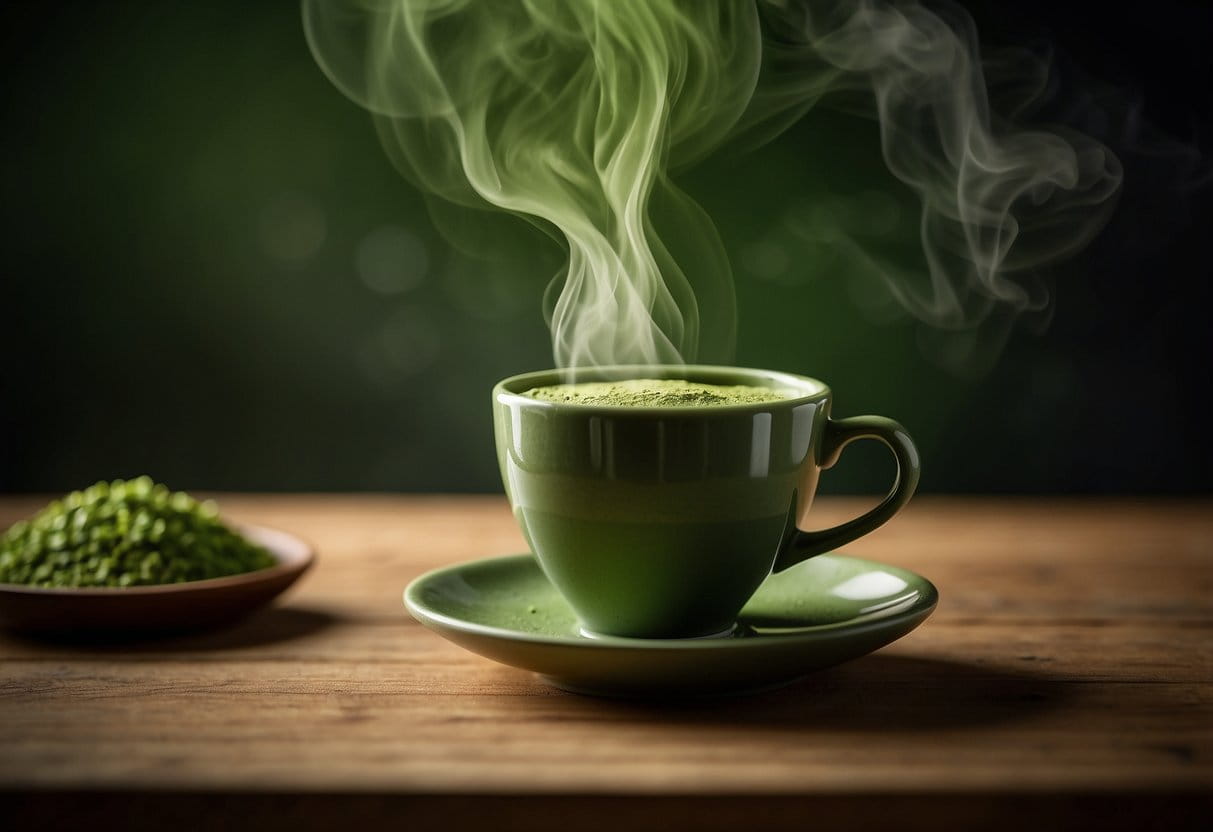
What does matcha taste like?
Matcha has a unique flavor profile. It is naturally sweet with savory, grassy undertones. Some describe it as creamy, slightly bitter, and umami-rich.
Is matcha bitter?
Matcha can have a slight bitterness. This depends on the quality and preparation. Higher-grade matcha tends to taste less bitter and is more delicately sweet.
Does matcha taste like green tea?
While both come from the same plant, matcha has a more intense flavor due to its concentrated nature. It tastes richer and more robust than traditional green tea.
Why does my matcha taste fishy?
A fishy taste may result from low-quality matcha or improper storage. Ensure you purchase from reputable sources and store matcha in an airtight container.
What influences the taste of matcha?
Several factors affect matcha's taste:
- Quality: Higher quality matcha tastes sweeter and less astringent.
- Origin: Matcha from different regions can have a distinct flavor.
- Preparation: Proper whisking and correct water temperature enhance flavor.
Is matcha supposed to be sweet?
Matcha has subtle natural sweetness. However, adding sweeteners or milk can enhance its flavor.
Can you make matcha less bitter?
Yes. Use cooler water (around 175°F) to prepare it. Adding a milk substitute like almond milk or a sweetener can also balance out bitterness.
← Older post Newer post →











